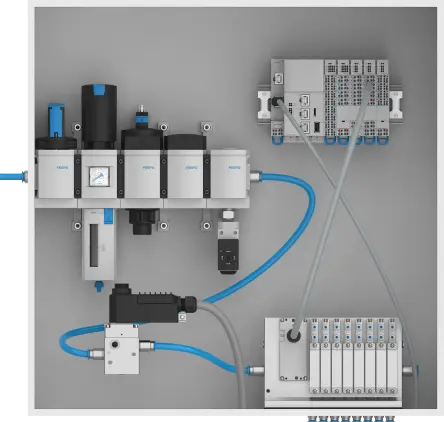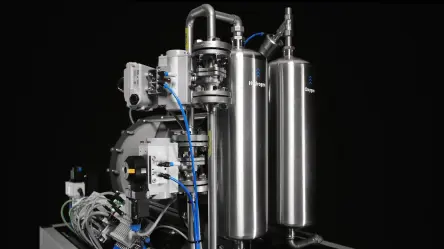Two routes to automation in hydrogen production
The automation of electrolysers offers two approaches: centralised or decentralised architecture. Both support the safe and efficient production of hydrogen. The difference lies in how the system is designed and controlled.

Centralised automation
With centralised automation, the control system is housed ina central control cabinet. All sensors, actuator technology and valves are connected by cables and are operated and controlled by a central controller. This creates a clear overview, simplifies maintenance and offers a space-saving solution when space is tight.

Decentralised automation
In a decentralised concept, intelligent automation components are positioned close to the process. The control of the system is distributed across several modules or units. These can be valve terminals or I/O modules in different systems, for example. This saves space in the control cabinet, reduces the amount of cabling and facilitates the modular expansion of your system.
Centralised, decentralised or even both?
That depends entirely on the framework conditions. A centralised solution is usually the best choice for a compact electrolyser. For larger systems with distributed modules, the decentralised solution is often better. Of course, you can also combine both concepts. Why not make the most of the strengths of two architectures to implement your specific ideas?
Are decentralised systems too complex?
Many people think that decentralised automation is difficult to manage. However, modern systems are easy and intuitive to configure. This simplifies commissioning and ensures that system operation is stable, without any unnecessary interruptions.
Decision-making made easy
Festo will help you find the right control concept for your requirements. The focus is always on what solution is the best, regardless of the technology used. This means that the decision depends on your system and your requirements. What is certain, is that Festo offers everything from a single source, from components to the control cabinet.
Already successfully being used now
Our customers successfully use centralised and decentralised automation solutions to produce hydrogen. This not only reduces costs, but also increases the efficiency and safety of the processes, thus makinga real contribution to decarbonisation. Make the most of our experience.
Checklist: Which concept suits you?
☑ Is your system compact or distributed?
☑ Will you need to be able to scale it flexibly in the future?
☑ How much space is available for control technology?
☑ Would you like to reduce cabling and installation work?
☑ Is a combination of centralised and decentralised solutions an option?